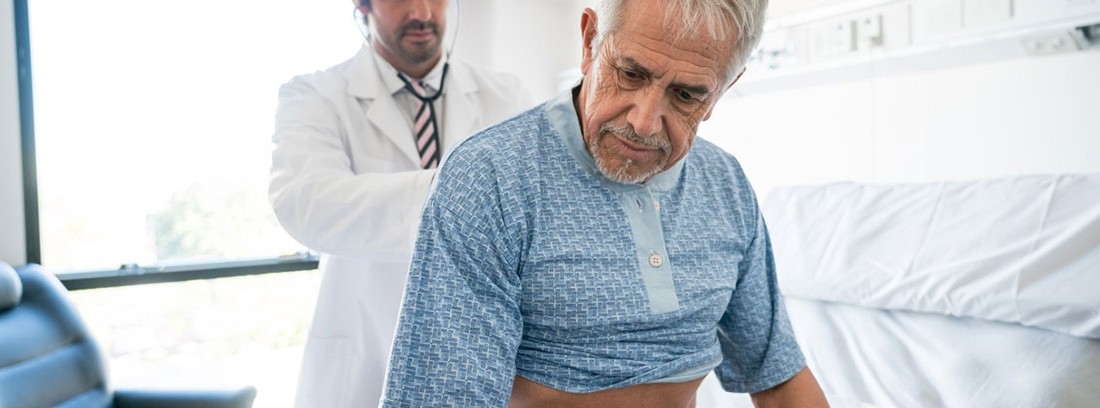Respiratory infections

respiratory tree infections are one of the most frequent diseases in the elderly and cause approximately 25% of medical consultations, being the fourth cause of hospital admission.
Changes that occur in older people in the respiratory system and immune system they make these diseases frequent and with greater complications than in other age groups. In addition, the diseases that coexist in the elderly and their associated polypharmacy complicate the prognosis and treatment of acute respiratory diseases.
Types of infections
These infections can be classified according to the level of the respiratory system they affect. So you can talk about:
Upper tract infections
They are usually viral and affect the highest part of the respiratory tree, that is, the nose, throat or pharynx and larynx. They usually cause pain when swallowing, production of mucus from the nose (watery at the beginning of the picture and thicker at the end), dry cough or with little whitish expectoration, aphonia, sneezing and general malaise. It can rarely be accompanied by a low-grade fever. It is what is known as a cold or catarrh.
The treatment is mainly symptomatic, with antipyretics and analgesics, mild antitussives and antihistamines at low doses (there are drugs that combine them), but mainly the usual activity should be reduced (absolute rest is not necessary in principle), increase the intake of fluids to thin mucus and use physical therapies such as thyme-infused gargles and nasal washes with saline solution.
Acute bronchitis
Although they are viral in most cases, they can also be bacterial from the start or due to superinfection. The trachea and bronchi are affected. The clinic it can start like a cold To which are added persistent cough with mucous or purulent expectoration (if there is bacterial involvement). Occasionally, if there is a bronchial spasm, wheezing occurs, as in asthma. There is also retrosternal pain, fever, general malaise and in more severe cases a sensation of shortness of breath, of suffocation (dyspnea).
In frail elderly can lead to decompensation of coexisting diseases (heart failure, diabetes, etc.). For treatment, in addition to being symptomatic with analgesics and increased fluid intake, antitussives or mucolytics, antibiotics and bronchodilators may be necessary; the doctor will decide in each case what to use.
Pneumonia
It is the infection by viruses, bacteria and even lung tissue fungi, which causes difficulty in the exchange of gases from respiration. At any age it is serious, but in the elderly this is even more important, since it presents more complications and mortality, due to the comorbidity and fragility of this type of patient.
The clinic is usually high fever and malaise, chest pain, choking and cough with purulent expectoration, but in some cases (depending on the causative germ) and especially in the elderly, the clinic may not be so florid. It often presents as decreased consciousness, delirium with hallucinations, repetitive falls, or simply a fever with no apparent focus.
The diagnosis is suspected in the case of suggestive symptoms, but confirmation comes from the physical examination, laboratory tests, and pulmonary radiography. Treatment is based on the use of antibiotics, whose choice depends on the type of pneumonia that is present, and on support measures such as oxygen, antipyretics and bronchodilators. Strict medical control is always essential.
(Updated at Apr 14 / 2024)